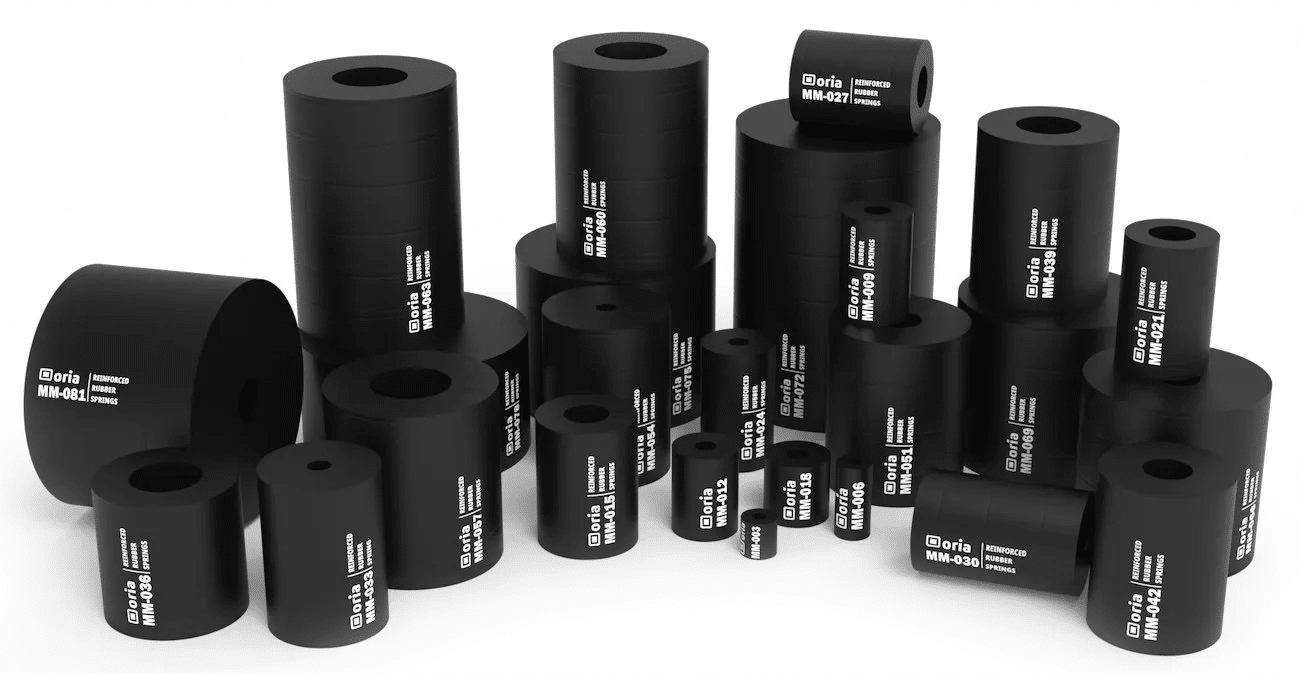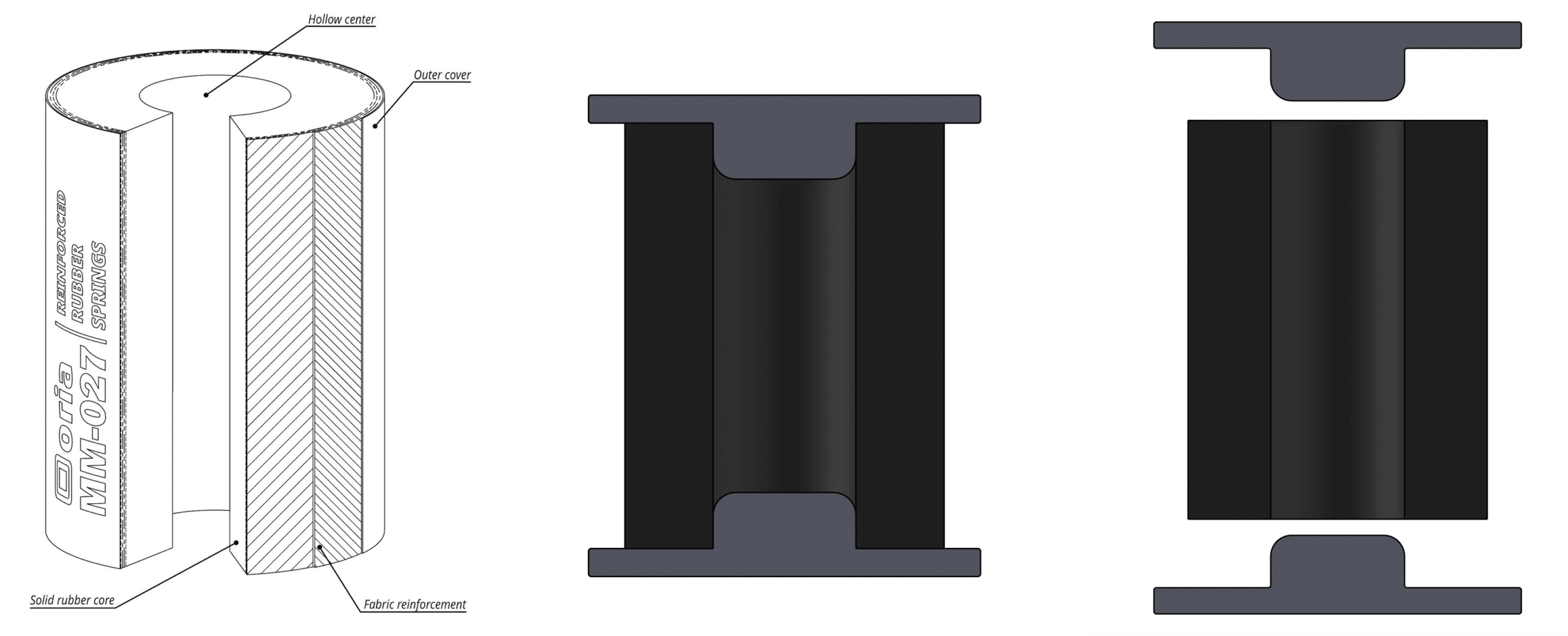Rubber springs – alternative to steel coil springs

A rubber spring is a vibration isolator made of rubber with fabric reinforcements. The rubber spring mounts easily with the mounting plates through the center hole in the middle.
Rubber has long been used for vibration isolation and has very good properties for this, the rubber springs are designed to withstand large loads.
Compared to steel springs, lower noise levels, better insulation and longer service life are obtained.
Features and benefits of a Rubber spring
- Very good vibration isolation: low natural frequencies provide excellent isolation in frequency ranges between 13 to 20 Hz.
- Constant isolation with variable load: A relatively constant spring-constant despite varying load gives an almost constant natural frequency.
- Compact design: can handle large loads, with a lower height compared to steel springs that have the same load capacity.
- Reduced sound level: Reduced mechanical noise levels caused by vibration compared to steel coil springs.
- Corrosion resistant: Because the spring is made of rubber, it has a longer life in corrosive environments.
- Eliminates machine downtime: The rubber construction eliminates the possibility of spring breakage (defect that occurs in steel coil springs), avoiding machine stoppages and potential damage to machinery and the environment.
- Easy installation: The rubber spring is a light and compact product that is easy and quick to install and uses minimal space. Normally they are easily mounted between 2 mounting plates.
- Low cost: The high load these springs can carry results in fewer springs being required for the application, which means less overall cost.
- Maintenance free: Since there are no moving parts, no maintenance or lubrication is required.
Oria Rubber Springs - Datasheet

Model: MM-003 to MM-081
Height: 44mm to 203mm
Maximum load: 1,4kN to 80kN
Feel free to contact us!

